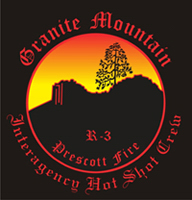(Originally published at 8:33 p.m. PDT October 9, 2017)
(Above: Map showing the location of the wildfires in Northern California. The red dots represent heat detected by a satellite at 12:54 p.m. PDT October 9, 2017. The yellow dots were detected in the previous 24 hours. Map compiled by Wildfire Today)
Monday marked the latest chapter in a book of unforgettable Octobers for California residents and firefighters alike, right next to the especially devastating fall months in 2003 and 2007.
The region was different this time — wine country of Northern California as opposed to the chaparral-dotted hillsides straddling the U.S-Mexico border near San Diego that bore witness to the Cedar and Witch fires, among the state’s most costly and destructive wildfires.
Throughout Monday, the similarities were coming into focus nonetheless.
Stunning before-and-after photos of the fire's destruction in Northern California. https://t.co/ao0Zf4immQ pic.twitter.com/LiSqFmnzxU
— Matt Pearce (@mattdpearce) October 10, 2017
Fanned by winds gusting in excess of 50 mph, upward of a dozen wildfires erupted Sunday night in the hills north of San Francisco and west of Sacramento. Already under a red flag warning, thousands of residents who went to bed Sunday gearing up for another week instead woke in the middle of the night and raced through ember-filled streets in a desperate effort to escape.
By morning, the scale of the fires was yet to be seen.
Hour by hour, the scope of the disaster came into focus.
By evening, the numbers were striking. In less than 24 hours, 15 wind-whipped fires in nine counties ignited and blackened more than 73,000 acres in less than 24 hours, according to CAL FIRE.
A much different Modis image today compared to yesterday as numerous #wildfires broke out across #NorCal overnight Sun into Mon. #CAwx pic.twitter.com/niF3J9p4Bh
— NWS Sacramento (@NWSSacramento) October 10, 2017
Among the three largest fires, based on CAL FIRE’s afternoon update:
- Atlas Fire in Napa County: 25,000 acres
- Tubbs Fire in Napa County: 25,000 acres
- Redwood Complex (Redwood and Potter fires) in Mendocino County: 19,000 acres
Several other fires ranging in size from a few acres to thousands also burned out of control into Monday evening.
More than 2,000 homes were destroyed, according to the governor’s office, and at least 10 people were killed with many more reportedly having suffered injuries. Many more were reported missing, and the death toll will almost certainly rise as operations transition to search and recovery.
The Sheriff’s Office confirms seven fire-related deaths from the Sonoma Co. fires. Our condolences to their friends and families.
— Sonoma Sheriff (@sonomasheriff) October 9, 2017
Many of the fires remained 0 percent contained, despite the efforts of hundreds of firefighters from crews across the state.
A 747 Supertanker was among those resources assisting teams on the ground. By 6 p.m. PDT on Monday the aircraft had conducted six sorties, dropping over 110,000 gallons of retardant mostly in the Napa area. Many other air tankers and helicopters were also very busy slowing down the fires, where possible, with water and retardant.
Air support is here for fires in the North Bay — a welcome sight to so many affected by this devastation: https://t.co/uRoJ7IRxrF. pic.twitter.com/xz7TCTFLhR
— ABC7 News (@abc7newsbayarea) October 9, 2017
A clearer picture of the damage is expected in coming days. But those visuals thus far, of lush vinyards and go-to wineries leveled, mobile home parks and up-scale neighborhoods both decimated, and even more damage expected as a red flag warning lingers into Tuesday.
I'm always amazed by what survives after a freight train inferno goes through. This was spinning. #santarosafire pic.twitter.com/Oqh04jNyGQ
— Jill Tucker (@jilltucker) October 9, 2017
Gov. Jerry Brown on Monday declared a state of emergency for several affected counties and also requested a Presidential Major Disaster Declaration to support state and local responses on the heels of an emergency proclamation issued for Napa, Sonoma and Yuba counties.
Mr. Brown’s major disaster declaration request in part:
“These fires have forced thousands of Northern California residents to immediately evacuate their homes and seek temporary shelter in order to save their lives. Many residents had little time to flee due to the fires’ rapid and erratic rate of spread through the rural terrain. Tragically, these fires have already taken lives and emergency responders anticipate the number of fatalities could grow.
The devastation and disruption caused by these fires is extraordinary. Thousands have been made homeless. Many school remain closed. Major roads were damaged or destroyed. The fire destroyed utility poles causing the loss of power to over 38,000 residents. These fires have destroyed and continue to threaten critical infrastructure, including 80 communication towers, impacting essential services for thousands of people…”
Sonoma and Napa wineries hit hard by Wine Country fires. Latest updates on the damage:https://t.co/j5EhqldZDr pic.twitter.com/akJB2Ptnqp
— SFChronicle (@sfchronicle) October 10, 2017
Fires in Southern California from years past were known for their fast, yet steady, rate of growth over the span of several days — perhaps the biggest distinction between this week’s fires to the north that exploded overnight.
Still, there’s the potential for even greater growth and destruction through the week. Winds are forecast to ease on Tuesday morning, but dry conditions will continue with highs in the mid-to-upper 70s and 80s by the weekend, according to the National Weather Service.









